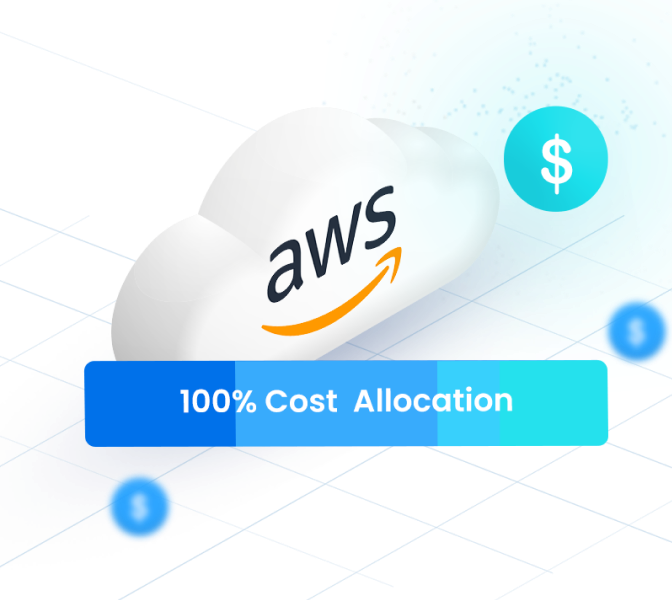How to Minimize Cloud Waste in AWS
AWS, or Amazon Web Services, is a cloud platform revolutionizing businesses’ operations. With AWS, organizations can enjoy the benefits of cost-effective, scalable, and reliable cloud infrastructure without investing in expensive hardware and maintenance.
However, with great power comes great responsibility. Cloud waste has become a pressing concern for businesses that use AWS. In fact, it’s estimated that up to 35% of cloud spending could be better spent on used resources or efficient usage. That’s a significant chunk of your budget that could be better utilized elsewhere!
The good news is that minimizing cloud waste is not rocket science. Following some best practices and using handy tools can save thousands of dollars and optimize your AWS infrastructure. So, let’s dive into the world of AWS cost optimization and learn how to keep your cloud expenses under control.
Best Practices To Minimize Cloud Waste In AWS!
There are several best practices that can help minimize cloud waste in AWS. Here are some of the most effective ones:
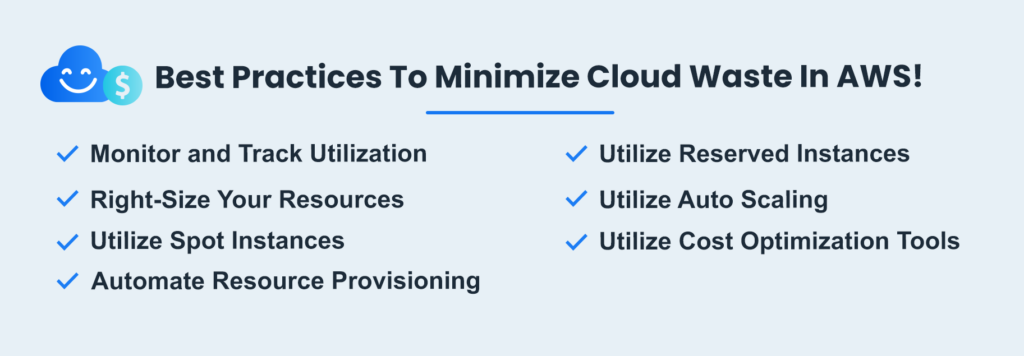
Monitor And Track Utilization
The first step in minimizing cloud waste is to monitor and track the utilization of your resources. This will enable you to identify areas where you are over-provisioning resources, paying for unused resources, or even paying for resources you don’t need. nOps provides real-time visibility into your AWS usage and costs, allowing you to identify and eliminate wasteful spending and optimize your resource utilization. With nOps, you can easily track your AWS expenses by service, account, region, and more, enabling you to make informed decisions and control your cloud costs.
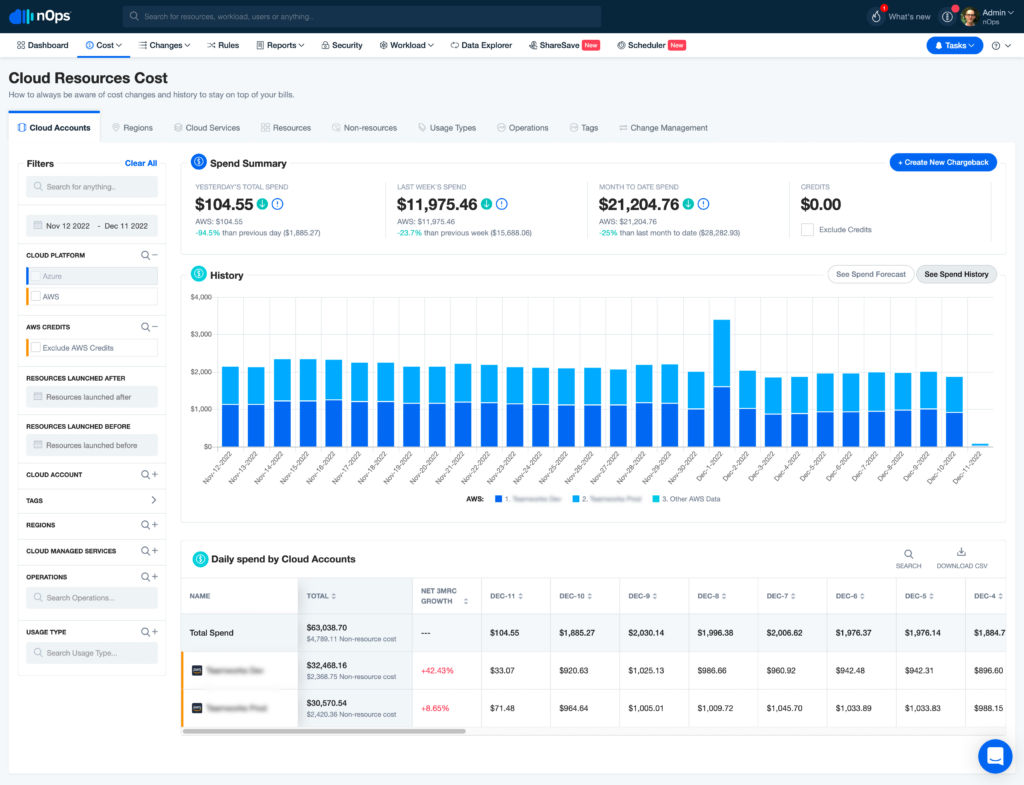
Right-Size Your Resources
Once you have identified areas of over-provisioning, it’s important to right-size your resources. Right-sizing involves adjusting the size and type of resources to fit your usage needs better. This can be done by scaling up or down, adding or removing resources, or switching to different resources. nOps Resource Rightsizing feature helps you make use of idle and underutilized resources to maximize potential and minimize cost wastage.
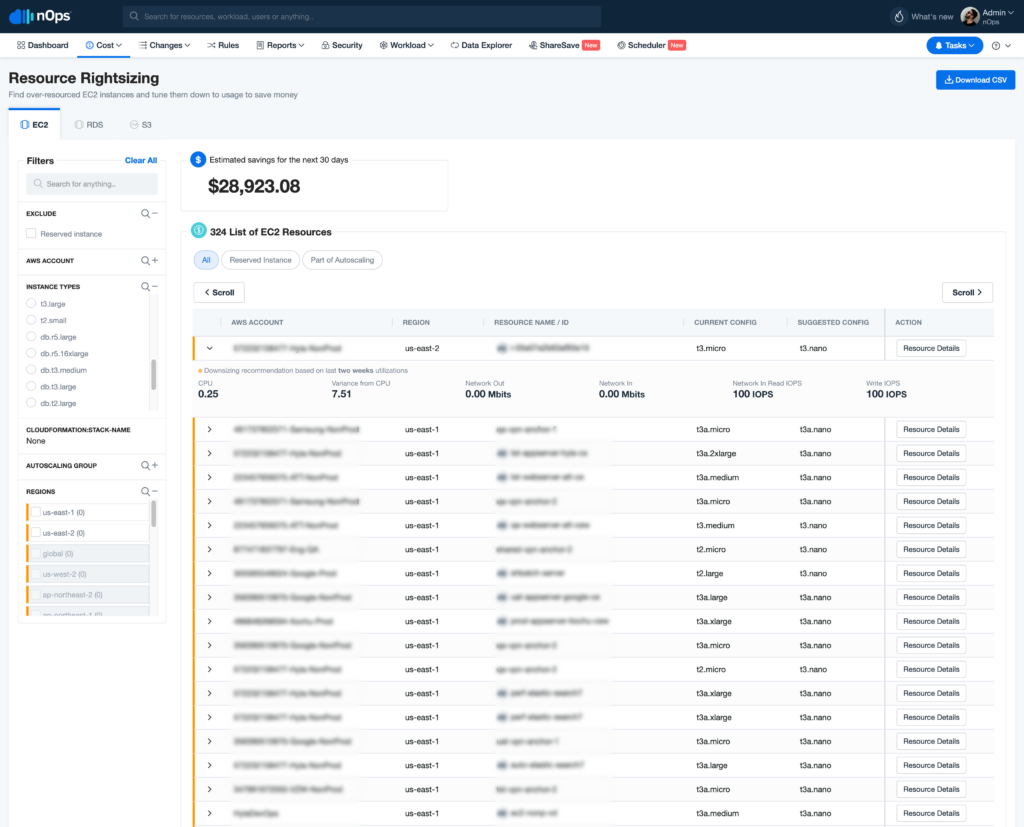
Utilize Spot Instances
Utilizing Spot Instances is a powerful cost-saving strategy for AWS users. Spot Instances are spare EC2 instances that are made available for a significantly lower price than On-Demand Instances. The catch is that Spot Instances are only available when AWS has excess capacity. When demand for compute resources goes up, AWS may need to reclaim the Spot Instance, and users are given a two-minute warning to save their data and gracefully shut down.
Despite the short-term nature of Spot Instances, they are ideal for workloads that can handle interruptions or are not time-sensitive, such as batch processing, data analysis, or testing. By using Spot Instances, users can save up to 90% of the cost of On-Demand Instances, translating into significant cost savings over time.
Automate Resource Provisioning
Automated resource provisioning is a great way to ensure that resources are always available and only used when needed. Automation can be used to ensure that resources are scaled up when workloads increase and scaled down when workloads decrease. Automation can also be used to ensure that resources are only used during peak usage times. nOps constantly learns your usage pattern to find idle resources and turn them off automatically to save you money on your AWS bill.
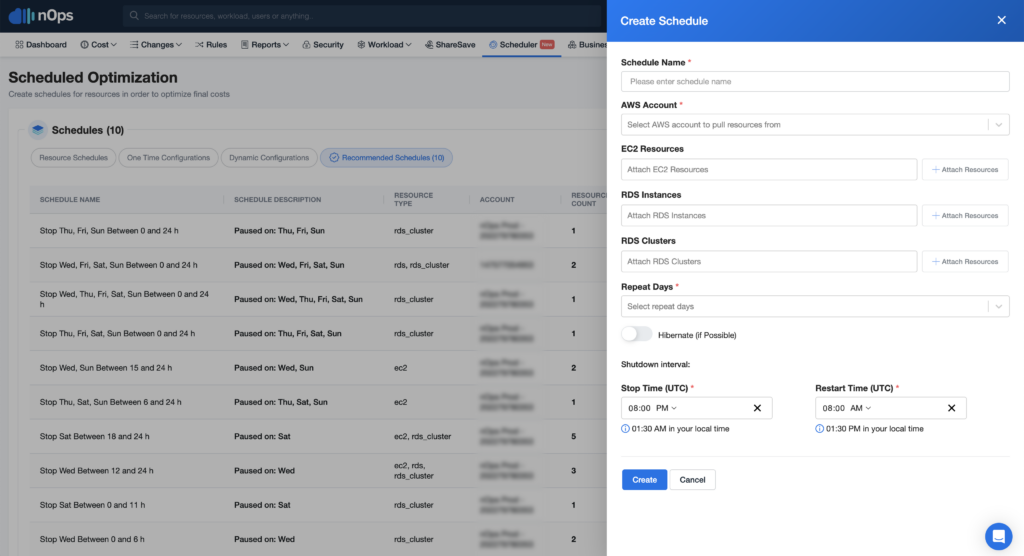
nOps ShareSave nSwitch sets itself apart from other scheduling tools by offering unique features such as resource sharing, cost optimization, and an intuitive user interface. It also provides real-time insights into cloud resource usage and costs, allowing users to make informed decisions about their cloud infrastructure. With its powerful automation capabilities, nOps ShareSave nSwitch is a valuable tool for organizations looking to optimize their cloud infrastructure, reduce costs, and improve efficiency.
Utilize Reserved Instances
Reserved instances are a cost-effective way of running applications in the cloud. Reserved instances are instances that have been pre-purchased at a discounted price in exchange for the customer agreeing to use the instance for a certain period of time. They can achieve up to 72% discount depending on the commitment length and the upfront payment amount..
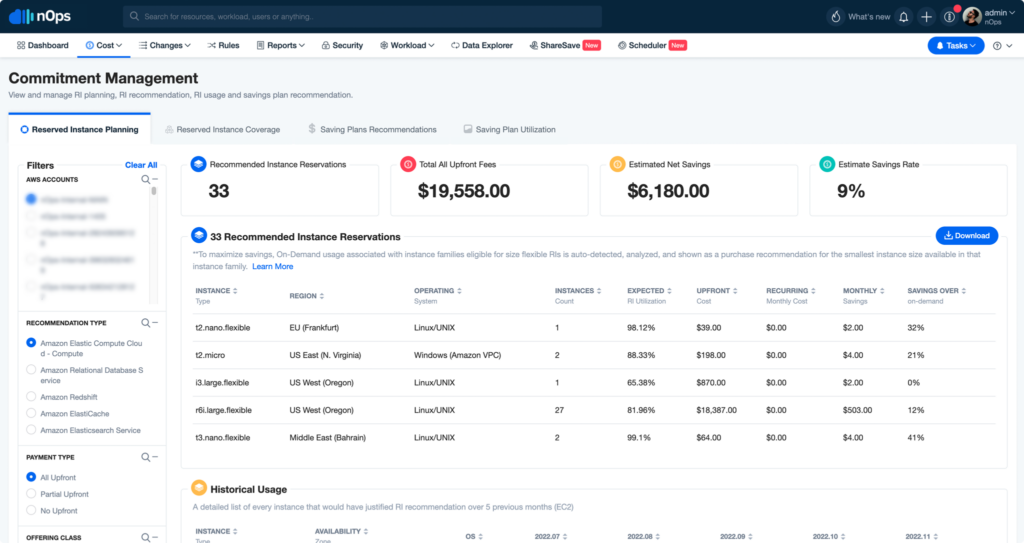
nOps enables you to view the usage of AWS Reserved Instances on a near-real-time basis. Reserved instances provide significant cost savings compared to on-demand billing, and instances and usage can be monitored through the nOps Commitment Management dashboard.
Utilize Auto Scaling
Auto-scaling is a great way to ensure your applications are always running optimally. Auto-scaling enables you to automatically scale up or down based on usage patterns, such as increasing the number of EC2 instances when usage increases and decreasing the number of instances when usage decreases. Auto-scaling ensures that you are always utilizing the most cost-effective resources.
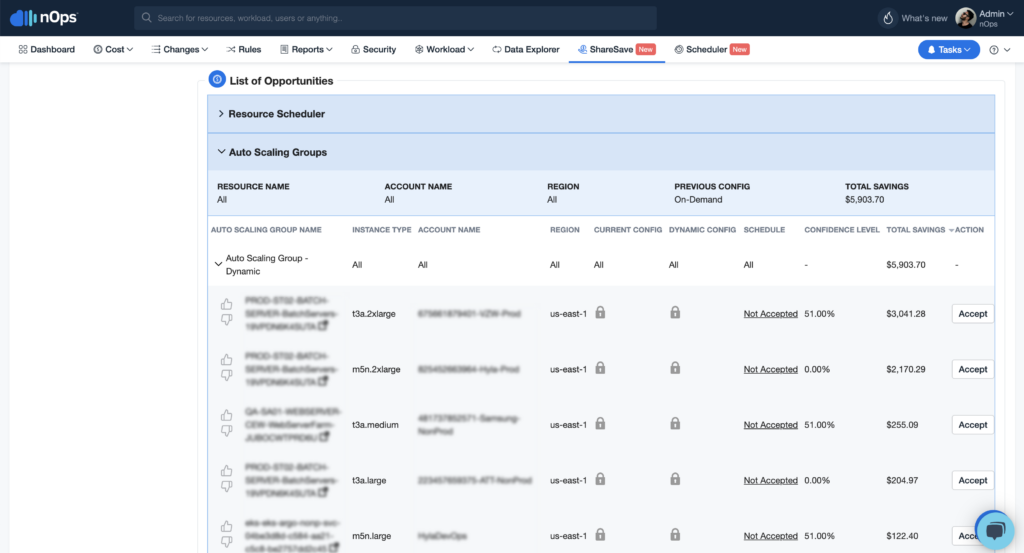
Utilize Cost Optimization Tools
AWS provides a variety of cost optimization tools that can be used to identify wasted resources and help you optimize your cloud spending. These tools include the AWS Cost Explorer, AWS Trusted Advisor and AWS Savings Plans. But, these are very restricted. You can try Cost Optimization Tools like nOps.
How can nOps help with Cloud Cost Optimization?
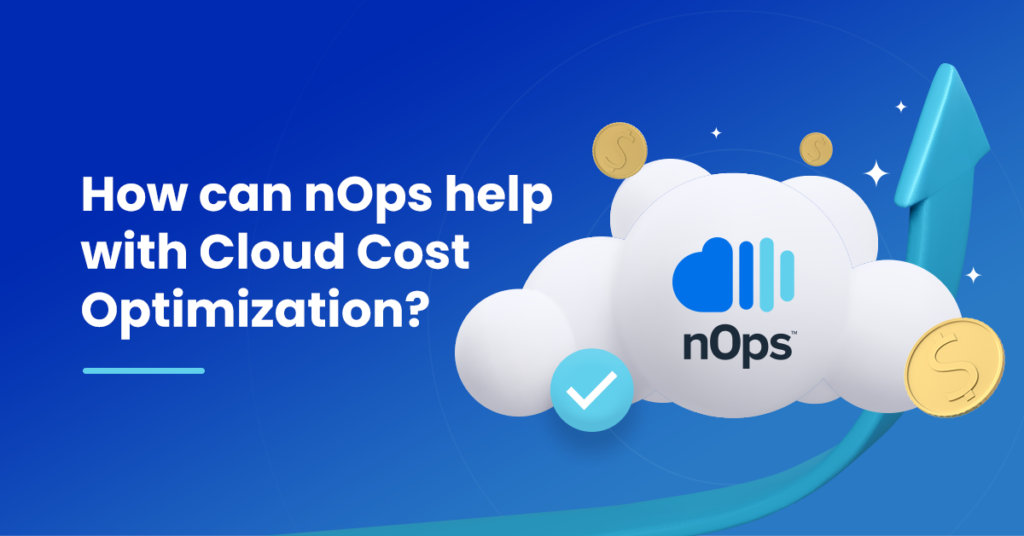
nOps is an innovative cloud management platform that offers a comprehensive suite of tools for AWS users to optimize their cloud costs effectively. With its intuitive dashboard and powerful analytics engine, nOps helps users identify and eliminate idle or underutilized resources, provision resources more efficiently, and reduce overall cloud spending. nOps provides detailed insights into users’ AWS environments, including historical usage data, detailed billing information, and granular resource-level insights, which enable users to make informed decisions and optimize their cloud infrastructure for maximum efficiency.
What sets nOps apart from other cloud cost optimization tools is its ability to automate many tedious and time-consuming tasks typically required to optimize cloud costs. For example, nOps can automatically identify idle and underutilized resources, recommend rightsizing options, and even provision and de-provision resources automatically based on utilization metrics. This automation feature allows users to optimize their AWS environment with minimal effort and focus on other essential tasks.
Moreover, nOps offers security and compliance-related features, such as security and compliance audits, customizable security rules, and detailed reporting that help users ensure their AWS environments comply with industry standards and best practices.
Sign up for nOps today. With nOps, you don’t pay unless we are saving you money.



